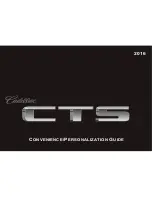
Tires
Inflation
Keeping the tires properly inflated
provides the best combination of
handling, tread life and riding com-
fort. Underinflated tires wear un-
evenly, adversely affect handling and
fuel economy, and are more likely to
fail from being overheated. Overin-
flated tires can make your car ride
more harshly, are more prone to
damage from road hazards, and wear
unevenly.
We recommend that you visually
check your tires every day and use
the pressure gauge that came with
your car to measure the air pressure
at least once a month. If you think a
tire might be low, check it immedi-
ately.
Check the pressure in the tires when
they are cold. This means the car has
been parked for at least three hours.
If you have to drive the car before
checking the tire pressure, the tires
can still be considered "cold" if you
drive less than 1.6 km (1 mile).
If you check the pressure when the
tires are hot (the car has been driven
several miles), you will see readings
28 to 41 kPa (0.3 to 0.4 kg/cm
2
, 4 to 6
psi) higher than the cold reading.
This is normal. Do not let air out to
match the specified cold pressure.
The tire will be underinflated.
Recommended Tire Pressures
for Normal Driving
The following chart shows the
recommended cold tire pressures for
most normal driving conditions and
speeds. Tire pressures for high speed
driving are the same as for normal
driving.
Front:
Rear:
The pressures are also given on the
tire information label on the driver's
doorjamb.
Use the pressure gauge that came
with your car every time you check
the tires. This will make it easier for
you to tell if a pressure loss is due to
a tire problem and not due to a
variation between gauges.
CONTINUED
Maintenance
Summary of Contents for 1995 NSX
Page 28: ...Safety Labels EXPANSION TANK CAP JUMP START Driver and Passenger Safety...
Page 183: ...Lights On cars with removable roof On the standard model Maintenance INTERIOR INTERIOR TRUNK...
Page 219: ...Fuses Under hood Fuse Box Canadian model Taking Care of the Unexpected...
Page 227: ...Specifications Technical Information page 163 page 220 page 221 page 221...
















































